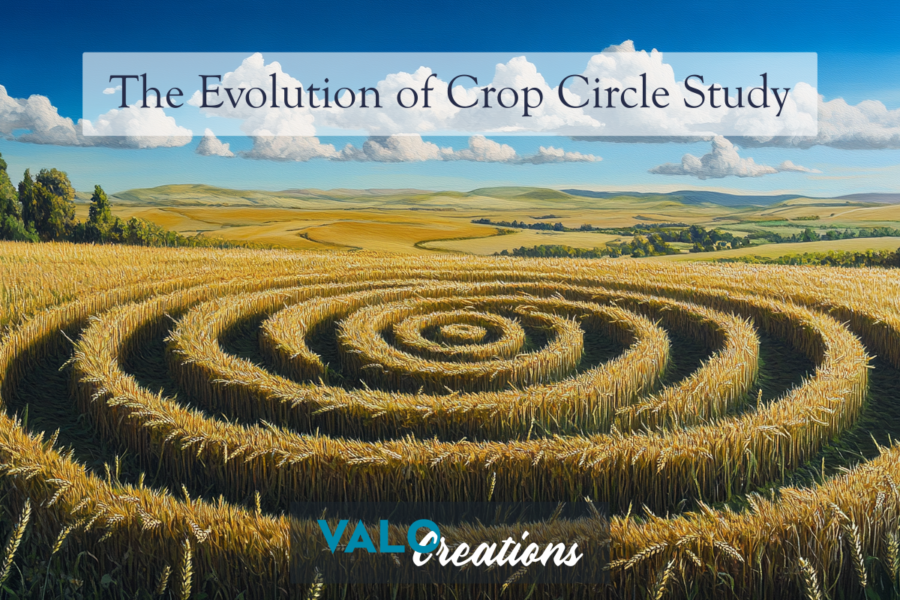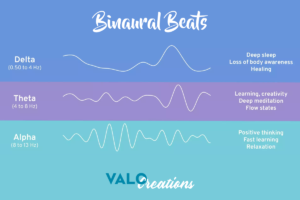Crop circles have fascinated, mystified, and puzzled both scientists and spiritual seekers for decades. These enigmatic formations, often appearing overnight in fields of crops, are not just beautiful works of art but also intricate designs that seem to carry deeper messages encoded in their geometry. The study of crop circles has evolved significantly over the years, transitioning from a fringe curiosity to a subject of serious inquiry for those exploring the intersections of science, art, and spirituality.
In this blog, we’ll explore how the study of crop circles has developed over the decades, the various theories that have emerged, and what they reveal about our connection to the greater universe.
The Beginnings: Early Crop Circles in the 1970s and 1980s
While crop circles have been reported in various forms for centuries, it wasn’t until the late 20th century that they began to capture widespread attention. In the 1970s, simple circular formations began appearing in England, often dismissed as hoaxes or the result of natural phenomena like wind or animal behavior. However, as the 1980s progressed, crop circles became more complex and appeared more frequently, particularly in the south of England.
During this period, researchers, journalists, and enthusiasts started to take notice. One of the key figures in bringing crop circles into the public eye was Colin Andrews, who, along with other early researchers, began documenting the formations and conducting preliminary investigations. Andrews coined the term “crop circle” and initiated serious inquiries into their possible origins, patterns, and meanings.
These early years were marked by skepticism from the mainstream scientific community, but for those with an open mind, it was clear that something beyond mere pranksters was at play. The complexity, precision, and rapid appearance of the designs left many asking: what forces are behind these formations?
The 1990s: The Rise of Sacred Geometry and Global Attention
The 1990s saw a significant shift in both the study of crop circles and their complexity. This decade brought about larger, more intricate designs that seemed to defy explanation. Not only did the patterns become more geometrically complex, but they also began to exhibit clear connections to sacred geometry—a system of design found in ancient spiritual symbols and natural formations, from flowers to galaxies.
Researchers like Michael Glickman and Dr. Gerald Hawkins began to delve into the geometric properties of the circles. Hawkins famously identified complex mathematical ratios and theorems embedded within the crop circles, leading to the theory that these formations were not random but intentional, encoded with messages that could be understood through geometry and mathematics.
In addition to geometry, the 1990s brought global attention to crop circles, with formations appearing in various countries beyond the UK, such as the United States, Canada, and Australia. The study of crop circles was no longer just a localized phenomenon; it became a worldwide curiosity. This international interest fueled speculation about their origin, with some proposing that they were signals from extraterrestrial intelligence, meant to communicate with humanity in a universal language—geometry.
The 2000s: Scientific Study and Electromagnetic Theories
By the early 2000s, crop circle researchers began to incorporate more scientific methods into their investigations. One of the most notable developments during this period was the study of the physical effects left behind in crop formations. Researchers such as Dr. William Levengood, a biophysicist, conducted studies on the altered structure of the plants in crop circles. His findings revealed that plants within the formations often exhibited elongated nodes and expulsion cavities, which suggested that they had been subjected to high levels of heat or electromagnetic energy.
These findings led to a new wave of theories that crop circles could be the result of unknown energy forces, possibly electromagnetic or microwave radiation, which was able to alter the physical structure of the plants without damaging the surrounding environment. This notion opened the door to further speculation about the role of energy fields, both natural and artificial, in the creation of these formations.
While some circles continued to be attributed to hoaxers, the scientific anomalies found in many genuine formations could not be so easily dismissed. The more we learned, the more mysterious these phenomena became.
Modern Crop Circle Research: Spiritual Insights and Consciousness
In recent years, the study of crop circles has taken on a more spiritual and consciousness-focused dimension. Many researchers and spiritual seekers believe that crop circles are not just physical phenomena but are also connected to a greater intelligence—whether extraterrestrial or interdimensional. This intelligence may be communicating messages to humanity about the expansion of consciousness, the evolution of the Earth, and our role in the cosmos.
Some crop circles are interpreted as messages about planetary shifts, environmental balance, and even personal transformation. The sacred geometry found within many formations is seen as a key to understanding higher realms of consciousness. These symbols resonate with ancient spiritual teachings about the interconnectedness of all things and the patterns that govern the universe.
One of the most compelling aspects of modern crop circle research is the personal experiences reported by those who visit the formations. Many people describe a sense of heightened awareness, emotional clarity, or even profound spiritual awakening when standing inside a crop circle. This has led some to believe that the circles are portals or vortexes of energy, designed to raise the vibrational frequency of those who come into contact with them.
The Future of Crop Circle Study: A Bridge Between Science and Spirit
As the study of crop circles continues to evolve, we find ourselves at the intersection of science, art, and spirituality. The formations themselves remain an open mystery—each new discovery seems to raise more questions than it answers. Are they messages from other intelligences, here to guide humanity through a critical period of transformation? Or could they be the result of human consciousness interacting with the universe in ways we have only begun to comprehend?
Regardless of their origin, crop circles have captured the imagination of people around the world, inviting us to explore the mysteries of both the external universe and our own inner consciousness. The study of these formations has come a long way since the simple circles of the 1970s, and it continues to push the boundaries of what we know—or think we know—about reality.
As we move forward, one thing is clear: crop circles are not just symbols in a field—they are keys to unlocking deeper truths about the nature of existence, consciousness, and the universe itself.
The evolution of crop circle study over the decades has taken us from skepticism to wonder, from simple explanations to complex theories, and from physical observations to spiritual insights. Whether viewed through the lens of science or spirituality, crop circles offer us a glimpse into the profound interconnectedness of the universe. As we continue to study and explore these formations, we are reminded that there is much more to reality than meets the eye, and that the journey toward understanding is as important as the answers we seek.




